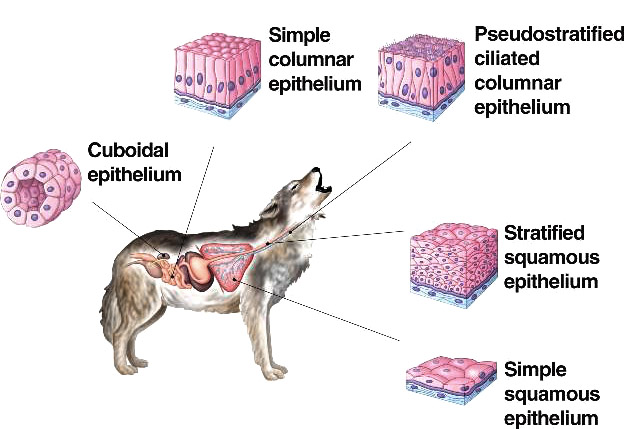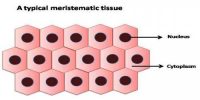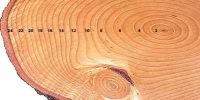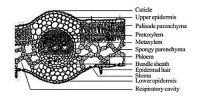Structural Characteristics, Function, and Location of Epithelial Tissue (Animal):
Structural Characteristics: Epithelial tissue covers the external of the body and lines organs, vessels (blood and lymph), and cavities. The cells of the epithelial tissue recline narrowly or side by side on a cellar membrane. There is no matrix in this tissue. On the basis of cell size, location in the animal body and nature of work, this tissue is of three types, such as;

Fig: Epithelial Tissue in Animal Body
(i) Squamous Epithelium: Cells of this tissue are flat like scales; nucleus is large. Example: Wall of the Bowman’s capsule of Kindey.
Function: Mainly filtration and covering.
(ii) Cuboidal Epithelium: Cells of this tissue are cuboidal, as the length, breadth, and height of the cells are nearly equal. Example: Collecting tubules of the kidney.
Function: Mainly absorption and covering.
(iii) Columnar Epithelium: Cells of this tissue are narrow and elongated like a column. Example: On the internal wall of the intestine.
Function: Mainly secretion, protection and absorption.
General Functions of Epithelial Tissue:
- These tissues form, the external and internal- covering of any organ or tube.
- After transformation, this tissue takes part in, protection; emission, absorption, diffusion, transportation etc. So, it can be said that epithelial tissue being transformed into glandular tissue and germinal tissue perform various significant functions.
- Epithelial tissue also helps to protect against microorganisms. The skin is the body’s first line of defense against bacteria, viruses, and other microbes.
















